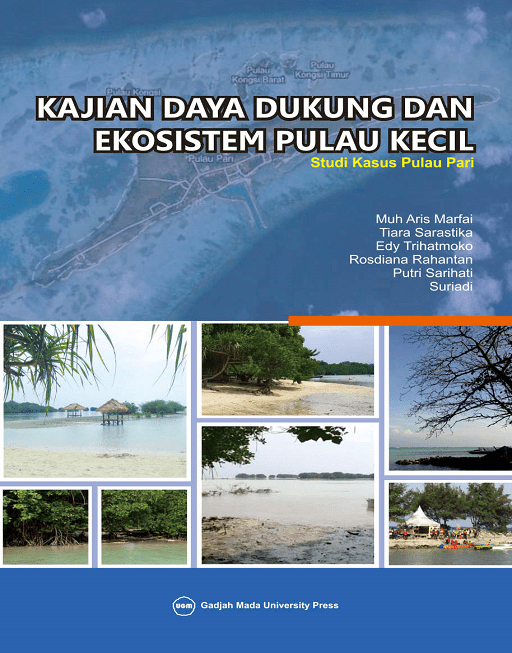 This book is a development of the final report of the 2015 Faculty of Geography MPPDAS Field Work Lecture on Pari Island, DKI Jakarta Province. This book discusses the environmental nuances on Pari Island which are divided into abiotic, biotic and socio-cultural environmental bases. The abiotic environment includes climatic conditions, coastal characteristics, freshwater conditions, and land use. The biotic environment includes mangrove ecosystems, coral reefs, seagrass beds, shrubs, shrubs, beaches, and the sea. The socio-cultural environment includes environmental cleanliness, livelihoods, education, and health. The condition of biodiversity on Pari Island is diverse and based on its level, it is divided into ecosystem biodiversity and species biodiversity. The suitability of the physical aspects of the development of attractions on Pari Island is quite suitable for marine tourism and beach tourism. Descriptions of environmental bases and biodiversity diversity on Pari Island illustrate the potential of resources which are the main aspects of development on the island, especially tourism development activities. Analysis of the suitability of physical aspects for the development of attractions can present information related to physical parameters that are appropriate and suitable for tourism activities, both marine tourism and beach tourism.
This book is a development of the final report of the 2015 Faculty of Geography MPPDAS Field Work Lecture on Pari Island, DKI Jakarta Province. This book discusses the environmental nuances on Pari Island which are divided into abiotic, biotic and socio-cultural environmental bases. The abiotic environment includes climatic conditions, coastal characteristics, freshwater conditions, and land use. The biotic environment includes mangrove ecosystems, coral reefs, seagrass beds, shrubs, shrubs, beaches, and the sea. The socio-cultural environment includes environmental cleanliness, livelihoods, education, and health. The condition of biodiversity on Pari Island is diverse and based on its level, it is divided into ecosystem biodiversity and species biodiversity. The suitability of the physical aspects of the development of attractions on Pari Island is quite suitable for marine tourism and beach tourism. Descriptions of environmental bases and biodiversity diversity on Pari Island illustrate the potential of resources which are the main aspects of development on the island, especially tourism development activities. Analysis of the suitability of physical aspects for the development of attractions can present information related to physical parameters that are appropriate and suitable for tourism activities, both marine tourism and beach tourism.
![]()
![]()

